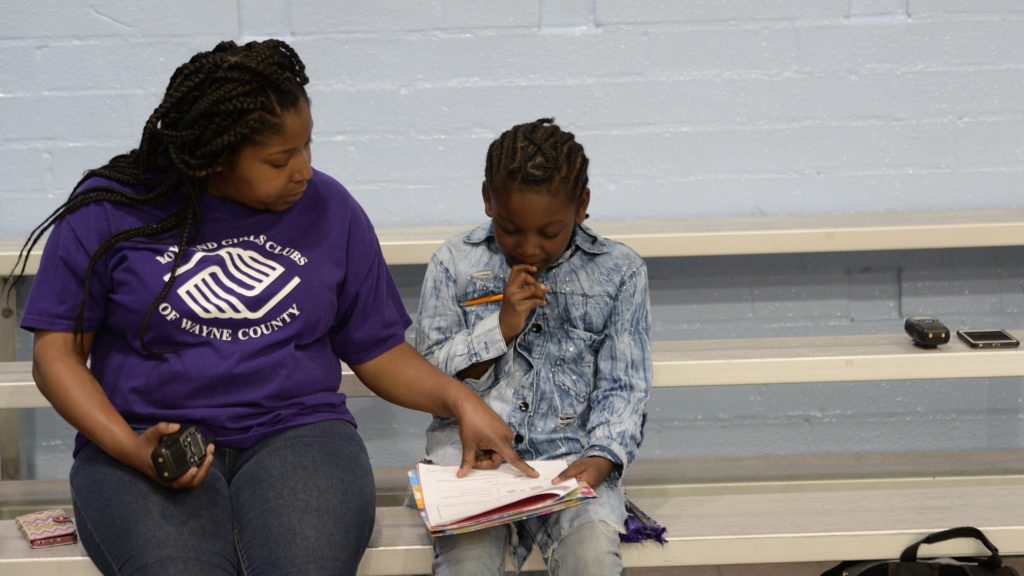By Sandy Cyr
From an early age, we are programmed to believe that we need to know what we will be when we grow up; that we should study hard, get into a good college, land a career and never deviate from that plan. Everything should be clearly mapped out, and when something doesn’t go according to plan, that is considered failure.
Not all paths are linear, however, and that’s okay. Sometimes things never really go according to plan. It is not in the failures or successes that we measure ourselves, but rather in how we manage the deviations. Each life experience offers scaffolding upon which we can build. And it is through these processes we can discover something new.
 Yasmine White, Founder and CEO of Voices Together, is keenly aware of that fact. Her own career trajectory has not been linear, but rather each opportunity has built upon the experience and knowledge she has gained from each of her previous experiences. White started out as a songwriter in New York City. In order to support herself, she landed a role at an organization that sent artists and musicians to hospitals and healthcare centers to work with patients. That experience unearthed in her a passion for music therapy.
Yasmine White, Founder and CEO of Voices Together, is keenly aware of that fact. Her own career trajectory has not been linear, but rather each opportunity has built upon the experience and knowledge she has gained from each of her previous experiences. White started out as a songwriter in New York City. In order to support herself, she landed a role at an organization that sent artists and musicians to hospitals and healthcare centers to work with patients. That experience unearthed in her a passion for music therapy.
After moving across the country to Los Angeles, Yasmine pursued a degree in music therapy, specializing in neurodivergent individuals, while at the same time working in the film industry. Through connections and conversations, she became fascinated with the idea of music therapy for people on the autism spectrum. Upon moving to North Carolina, White set up her own practice out of her home, which led to founding Voices Together in 2008.
“You find threads,” says White. “If you really look at your life and where you are, you can absolutely find threads that make sense to what you’re doing. When I was a teenager, I would sing to my Grandmother. Her face would light up when I would sing certain songs because she would remember things because music does that. Music has a fascinating interaction with the brain.” The language area of the brain and the part of the brain that synthesizes music can be the same part of the brain, especially for someone with autism. It is through music that Voices Together helps individuals start to build speaking skills.
The mission of Voices Together is to transform lives so that each individual can transform themselves. When Yasmine began her practice, she was working with neurodivergent individuals. She was seeing results, but on a one-to-one basis; the social element was not coming into play. Peer-to-peer interaction, she realized, was one of the biggest areas of growth for these individuals. She began working with a group of adults, and soon discovered that advocacy was important; being independent was important. Through music therapy, they were able to develop their communication and social emotional skills to become more independent. “The crux of the matter is: self-awareness is where you start,” according to White, “which leads to the ability to express oneself on some level about who you are and what you’ve learned about yourself. And then having a process in place, a safe process where you’re giving kids, teens and adults the tools to manage themselves and problem-solve themselves is a very different way to approach working with folks.”
 Today, Voices Together works in school systems throughout North Carolina. Music therapists act as guides and facilitators, meeting students where they are. The core of the program is a focus on Social-Emotional Learning and communication; to give individuals the ability to grow and manage their own lives; to help them feel invited and validated. White calls it the 50/50 approach: “Tell me who you are. I’ll tell you who we are. Let’s talk, we’ll give you tools. Let’s bridge this, let’s appreciate different perspectives in the world.” By igniting their brains through music, the program gives individuals an opportunity to belong; to have their own voice.
Today, Voices Together works in school systems throughout North Carolina. Music therapists act as guides and facilitators, meeting students where they are. The core of the program is a focus on Social-Emotional Learning and communication; to give individuals the ability to grow and manage their own lives; to help them feel invited and validated. White calls it the 50/50 approach: “Tell me who you are. I’ll tell you who we are. Let’s talk, we’ll give you tools. Let’s bridge this, let’s appreciate different perspectives in the world.” By igniting their brains through music, the program gives individuals an opportunity to belong; to have their own voice.
While the concept of Social-Emotional Learning is fairly new to the general public, Voices Together has been employing it in their programs for almost sixteen years. Therapists work with students on how to identify and express their feelings–skills which can be very hard for this population–and on how to interact with others.This, in turn, helps build capacity in the classroom when students are able to express themselves. The model is dynamic and it’s integrative, working on multi-layers of skills at the same time. Each new skill builds upon the scaffolding Voices empowers individuals to craft for themselves.
At the same time, the organization itself continuously works to build upon its own scaffolding of learning and experiences. From starting out of a home music therapy studio, to getting a grant to enter the classroom, to growing across the state, Voices Together is constantly evolving.
The idea of offering virtual opportunities was already on the radar for Voices Together, but with most transformations, the process to develop them was bogged down with planning, meetings, and uncertainty. “When you have to make something work you make it work and then guess what? You discover something else,” according to White. “Something may seem like it’s urgent and stressful and awful, but in solving the problem you might find something new in there that you hadn’t thought of that we can do.” This opened up the opportunity for Voices Together to look at other things they could do that they didn’t think were possible. By quickly shifting to online programming and continuing to refine the efforts, the organization has learned that they can train completely online; how they can provide follow up material for teachers; and how they may scale the offerings to provide their program virtually across the country or across the world. They continue to develop new offerings, including the recent launch of their Music Therapy Training Institute. Adds White, “we’re in motion! It’s exciting!”
Spend anything more than a moment talking with Yasmine about her work, and you immediately see that her passion and love for what she does is profound. Her deep philosophy from the beginning when she started this organization was that everyone should have, as a right, the ability to voice who they are, what they need and where they want to be in the world. Everyone should have the ability to take control over their own destiny. All of this has been extremely important to why Voices Together engages in this work.
The core of who you are always stays with you, no matter what your path looks like. Music has been a thread throughout Yasmine’s life and career. Bringing her passion for the arts and her love for people into a space made safe through therapeutic skills has created ways to help individuals grow and succeed; to feel successful and thrive. In each of our own existences, we build upon different experiences to get to where we are today. Nothing is ever wasted, especially when we can pull these threads, and continue to evolve.
LEARN MORE: Autism and the Power of Music
Music therapist Yasmine White shares the insights she’s developed after decades of working with children, teens and adults on the autism spectrum, both in private practice and as founder of Voices Together, a non-profit music therapy organization that brings her effective techniques to schools across North Carolina. The techniques featured in this book are designed to bring back the connection of joy, motivation, and understanding that everyone needs in order to truly grow.
As any parent of a child with autism understands, sometimes helping your child can feel overwhelmingly hard. Autism and the Power of Music helps find insightful, practical new ways for you and your child to connect through music, even when it feels difficult. Because music and language may be processed in the same hemisphere of the brain in children on the spectrum, the techniques in this book can help unlock language in an entirely new way. Music becomes a bridge to help children access language in ways other approaches cannot.
ABOUT THE AUTHOR
 Sandy Cyr is the Editor-in-Chief for the Philanthropy Journal. Sandy considers herself a social justice warrior for the nonprofit sector, and in her spare time she fancies herself a farmer.
Sandy Cyr is the Editor-in-Chief for the Philanthropy Journal. Sandy considers herself a social justice warrior for the nonprofit sector, and in her spare time she fancies herself a farmer.







